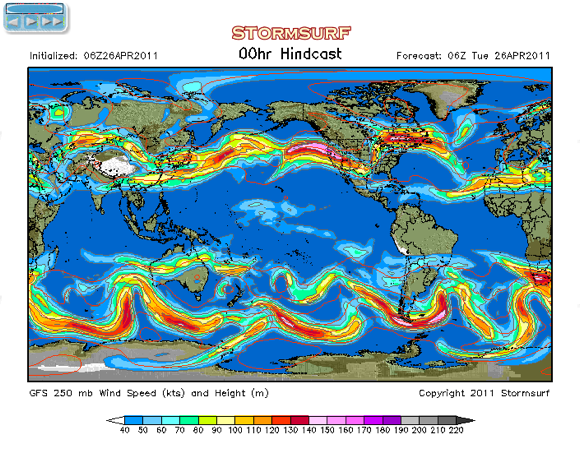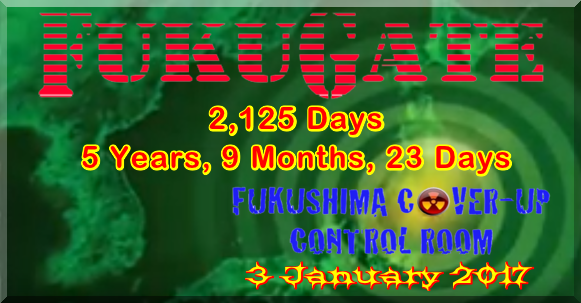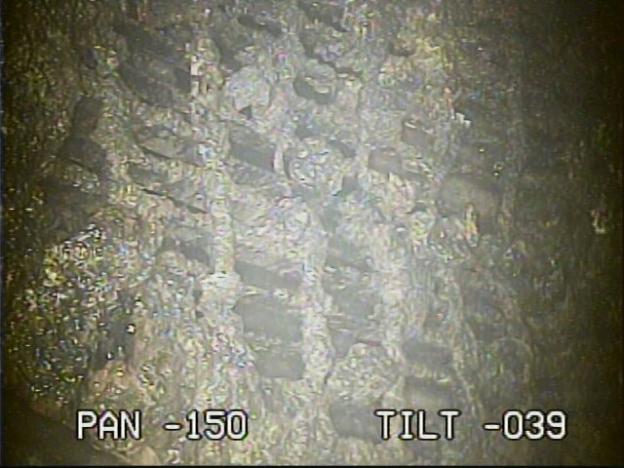It looks like you're using an Ad Blocker.
Please white-list or disable AboveTopSecret.com in your ad-blocking tool.
Thank you.
Some features of ATS will be disabled while you continue to use an ad-blocker.
share:
originally posted by: DancedWithWolves
a reply to: Silverlok
Well said.
Maybe that's why they are trying to find that 197Au under 1-3. Interesting write up on Development of Nondestructive Assay to Fuel Debris of Fukushima Daiichi NPP ...
A little gold could help pay some bills. Maybe throw a little more mercury inside. Rumor has it, the Mausoleum of the First Qin Emperor (Qin Shi Huang) in China and also a chamber below the Pyramid of the Feathered Serpent at Teotihuacan, might have a surplus of mercury.
GE's wallet should be wide open. And a lot more.
So...given that a triple meltdown was in progress from the start, now admittedly covered up, what should the evacuation and emergency response protocols have been? How different was the response, because of the lies? How badly did the lies compound what was already catastrophic?
Your spelling....ain'tchanow. I get it.
Good to see you. It's been a minute.
" been a minute"...walk hard...'I never realized how easy it is to accidentally chop someone in half with a machete', ...
in the beginning: a minute was a long, long, time for the relation of everything to it's nearest everything else...
if "the" big bang , ever plays nice with relativity that is to say;
otherwise; some minutes do have (perhaps) more mass than others, and hence are observed , though inherently intangible by nature , as ; invisible by "normalcy",... I wonder , myself if that is simply a self serving perceptual bias of my own .
good to still be able to have a few ( or any ) of those of any kind.
though, still damn curious about the mercury angle, ' short on physical (radioactive) gold please ' , never stranger than real life I guess,
and thanks ...D, "Ohio" in Zombieland vernacular, for giving a minute.
a reply to: Silverlok
the aside is toilet seat lid power-kiting. one buckyball strewn beach and respirator required. I pay through the knees and concluded that I am well past my half-life lol.
on topic, a recent bbc programme if I am not mistaken themed 'twisting the dragons tail' included a conversation with a younger generation of nuclear scientist who proposed that a new salt reactor could deal with all accumulated waste. I haven't looked into this too far as of yet. ongoing.
f.
the aside is toilet seat lid power-kiting. one buckyball strewn beach and respirator required. I pay through the knees and concluded that I am well past my half-life lol.
on topic, a recent bbc programme if I am not mistaken themed 'twisting the dragons tail' included a conversation with a younger generation of nuclear scientist who proposed that a new salt reactor could deal with all accumulated waste. I haven't looked into this too far as of yet. ongoing.
f.
originally posted by: fakedirt
a reply to: Silverlok
the aside is toilet seat lid power-kiting. one buckyball strewn beach and respirator required. I pay through the knees and concluded that I am well past my half-life lol.
If I cut a peach in half and find the seed , is the seed the essence of the peach? if I cut the seed in half and find nothing, is that the essence of the peach ( and the seed) ?
Sometimes language is specifically designed for the kind of mind that long ago cut the seed of the peach in half to find it's center.
"... on topic, a recent bbc programme if I am not mistaken themed 'twisting the dragons tail' included a conversation with a younger generation of nuclear scientist who proposed that a new salt reactor could deal with all accumulated waste. I haven't looked into this too far as of yet. ongoing ..."
SALT; you mean sodium, one of the most reactive metals (/elements) on earth, at high temperature , and as a fluid , as the "future" of "safe" reactors?
hmmm...
did you know that in the U.S. experimental reactors do not have to be licensed or regulated in any way ?
did you know that if "young" scientists are pursuing salt or pellet reactors both have been tried and failed spectacularly ( especially the molten salt one on cali's central coast in the 60'S ), for very obvious reasons...and even if by some magic they are made to work without astronomical maintenance schedules and costs( not to mention cosntruction) ...where does one put the "spent fuel" ( waste) ...I mean there are only so many 'Iraq's' to dump jillions of DU rounds into , right?
As 'on topic' as I can be for a post like that on a thread as buried as this...
and do you have a point?
edit on 31-8-2016 by Silverlok because: (no reason given)
edit on 31-8-2016 by Silverlok because: (no reason
given)
edit on 31-8-2016 by Silverlok because: (no reason given)
originally posted by: fakedirt
a reply to: Silverlok
the on topic point being the claim made for ridding the globe of all radioactive waste as was discussed in the programme.
so, chewing gum for the eyes?
f
Terminology always nomiclates origins. I like this definition of 'programme' ; "A series of coded software instructions to control the operation of a computer or other machine."
There is no way in hell I would share anything ( if I even even ) know ( knew ) about radiation remediation, environmentally until the crooks responsible are no longer profiting (PREYING) on the people they are killing.
perhaps you could elucidate me on "the programme', as you see it ..both sociologically and politically speaking as it is...
originally posted by: jadedANDcynical
a reply to: Silverlok
...
Iirc.
LIRC...are things such as this no longer science.
a reply to: Silverlok
An interesting post from simply info:
www.fukuleaks.org...
...73%, hmm...I wonder how the TPTB are swallowing that pill.
An interesting post from simply info:
The sitting Niigata prefecture governor, Hirohiko Izumida has been blocking the potential restart of TEPCO’s Kashiwazaki Kariwa nuclear plant in Niigata. He insisted a complete understanding and investigation of the Fukushima disaster should take place before he would consider any permission to restart TEPCO’s reactors in his prefecture. The Japanese government’s entire Fukushima recovery plan including what to do with TEPCO has been dependent on restarting Kashiwazaki Kariwa so TEPCO had a significant stream of income. Then that money would be used to help fund the decommissioning and compensation payments tied to the disaster. Prime minister Abe and his political party the LDP decided to oust Izumida who is also an LDP member. So they ran their own candidate in his election after creating a scandal about the sale of a ship owned by the prefecture. But the LDP’s hand picked candidate lost. The person who won, was a left leaning candidate from a coalition of smaller political parties. He ran on an anti-nuclear platform and handily won the election. Ryuichi Yoneyama will take over the governors office. This means it is extremely unlikely that the Kashiwazaki Kariwa nuclear plant will see any reactors restart within the next 4 years, the length of the governor’s term in office. TEPCO has already been seeing their finances strained as they try to cover the costs for the portion of the 3-11 disaster caused by their nuclear plant. They also recently asked the government to continue holding a stake in TEPCO to help cover costs for a longer period of time as they determined that decommissioning costs at the plant site had increased substantially. This situation in Niigata may be a long term stance against restarting TEPCO’s reactors in their prefecture. A 2007 earthquake saw some damage to that plant and some radiation releases to the environment. Exit polling by NHK showed that 73% of the people in Niigata are against restarting reactors. So if restarting Kashiwazaki Kariwa is highly unlikely to ever take place due to local opposition and this restart is the core part of the government’s plan for TEPCO, this not only raises the potential that TEPCO could never recover financially but it could extend to hinder further reactor restarts if political resistance increases. On Monday TEPCO’s stock dropped 8% on the news that the new Niigata governor would also be against restarting Kashiwazaki Kariwa.
www.fukuleaks.org...
...73%, hmm...I wonder how the TPTB are swallowing that pill.
Thank all of you for keeping up on this thread.
Sometimes, life gets in the way and we lose a member for a while...
Much Love to all.
Sometimes, life gets in the way and we lose a member for a while...
Much Love to all.
I am the origin builder.
originally posted by: fakedirt
a reply to: thorfourwinds
My own silly fault. I dropped it about 18 inches onto hard standing (first time hopefully last time). upon opening the unit one of the Geiger-muller tubes was displaced from its original position. I am abstaining from further diy in the hope the origin builder can sort it for me.
f

Greetings:
Merry Christmas and Happy Holidays and Happy New Year to all.
One might consider it interesting about all the flak about merely asking
pertinent questions and subsequent member blocking over the PART 1 fiasco.
Peace Love Light
ColoradoGold
Well now.
We find this to be rather interesting - and under-reported...
Graphene Oxide for Nuclear Decontamination
Worst legacy of nuclear power industry
We find this to be rather interesting - and under-reported...
Graphene Oxide for Nuclear Decontamination
Worst legacy of nuclear power industry
www.i-sis.org.uk... Graphene Oxide for Nuclear Decontamination Worst legacy of nuclear power industry Among the worst legacy of nuclear power industry is the huge amount of long-lived radioactive wastes generated that contaminate land and water, among which the transuranic elements – elements with atomic numbers greater than 92 (that of uranium) - are the most toxic. The recent accident at the Fukushima Daiichi nuclear power plant released enormous quantities of radionuclides to the environment, including contaminated cooling water, rivalling if not exceeding the Chernobyl fallout. The latter has continued to contaminate soil, sediment and groundwater, with devastating health impacts still unfolding through the years and down the generations (see [1] Death Camp Fukushima Chernobyl - an ISIS special report, SiS 55). Naturally occurring radionuclides are also brought up in fracking fluids (see [2] Fracking for Shale Gas, SiS 57), and exposed as the result of mining operations. Effective treatment and decontamination measures are sorely needed.
Researchers led by Stepan Kalmykov at Moscow State University in Russia and James Tour at Rice University Houston, Texas in the US may have found the perfect solution for nuclear decontamination in graphene oxide [3, 4]. The carbon allotropes fullerenes, carbon nanotubes, nanodiamonds and graphene have received a lot of attention lately in nuclear waste management.
Graphene oxide, however, has been relatively neglected, except as an intermediate to making graphene by chemical exfoliation from graphite. But graphene oxide has proven to be non-toxic and biodegradable, and could be produced in bulk in an environmentally safe manner. It is soluble in water and forms stable colloid suspensions when dispersed in other liquids because of its amphiphilic (able to mix with water or oil) character. Graphene oxide dispersed in liquids also show excellent sorption capacities. Previously, it was shown to remove Cu (copper), Co (cobalt), Cd (cadmium), Eu (europium), arsenate, as well as organic solvents.


Yummmm... those California 'organic' vegetables.
Any questions?

edit on 3-1-2017 by ColoradoGold because: wanker alert
Hm
Emphasis mine
The Fukushima nuclear disaster is ongoing
This seems to SOP for how the entire nuclear power industry has been run. Just pretend it's not a problem and maybe no one will notice.
The 5th anniversary of the Fukushima disaster and the 30th anniversary of the Chernobyl disaster, the two most catastrophic nuclear accidents in history, both occurred recently. Images of Chernobyl are replete with the international sign of radioactive contamination (a circle with three broad spokes radiating outward in a yellow sign). In contrast, ongoing decontamination efforts at Fukushima lack international warnings about radioactivity. Decontamination workers at Fukushima appear to be poorly protected against radiation. It is almost as if the effort is to make the Fukushima problem disappear.
...
A recent visit to northeast Japan revealed wholly unexpected aspects of the impact of the meltdown of three nuclear reactors. The area devastated by the nuclear accident is easily accessed by a two-hour train ride from Tokyo to the city of Fukushima. It is then possible to rent a car and drive to within 18 kM of the reactors, which are still in meltdown.
...
The roads deep into the region affected by the radioactive plume that engulfed the area in March of 2011 are clearly marked and readily accessible in a car rented at the Fukushima rail station. My Japanese-speaking colleague translated the rental agency’s map as indicating an “area not to return to,” which we carefully avoided.
...
Following route 114 traveling east toward the coast, progressively larger piles of large black plastic bags filled with dirt appeared on the roadside.
...
As route 114 progresses toward the exclusion zone indicated on the car rental agency’s map, the piles of plastic bags filled with dirt reach unimaginable dimensions. Numbered in the many thousands, they eventually fill entire valleys that recede off into the horizon. In some instances, the piles of black plastic bags are covered with blue tarps with pipes inserted into their tops, presumably to provide ventilation.
...
The readings on the radiation monitors ranged from 0.2115 to 1.115 microsieverts per hour, a measure of the relative risks imparted to biological tissues by ionizing radiation.
...
There was no security at most of the contaminated sites, and thousands of plastic bags of contaminated dirt were piled high in areas without any supervision or even a fence to prevent access from the public roadway.
Emphasis mine
The Fukushima nuclear disaster is ongoing
This seems to SOP for how the entire nuclear power industry has been run. Just pretend it's not a problem and maybe no one will notice.
edit
on 8-1-2017 by jadedANDcynical because: (no reason given)
24 January 2017

If one were to believe Tepco's (gu)estimate of ONLY 400 tons per day of highly radioactive water being dumped directly into the Pacific Ocean, how many tons of DNA-altering death water is that in almost SIX YEARS?
Does it even matter at this point?
Will our new 'knight in shining armor' President Donald J. Trump, dare to take on the nuclear cartel and call for a moratorium on all nuclear construction in the U.S. until a permanent solution to the waste problem has been addressed?
Will our new Sec/Energy, Rick Scott, revive the efforts to make Yucca Mountain the end-all for this waste?
Or will the government continue to shirk their responsibility for that high-level waste (as agreed-to when the government licensed the construction of commercial nuclear reactors) or continue to force the utilities to store that accumulated spent fuel on-site in grossly inadequate spent fuel pools?
BTW, the last time we checked, that 'nuke fund' was somewhere north of $25 billion dollars.
Want to bet that it has not been 'lost' in the shuffle?

Thank you for your time and consideration.
With great respect,
ColoradoGold
Peace Love Light
Liberty & Equality or Revolution
Hec'el oinipikte (that we shall live)
FUKUSHIMA FALLOUT CLOCK
Elapsed Time since March 11, 2011, 2:46 PM - Fukushima, Japan

If one were to believe Tepco's (gu)estimate of ONLY 400 tons per day of highly radioactive water being dumped directly into the Pacific Ocean, how many tons of DNA-altering death water is that in almost SIX YEARS?
Does it even matter at this point?
Will our new 'knight in shining armor' President Donald J. Trump, dare to take on the nuclear cartel and call for a moratorium on all nuclear construction in the U.S. until a permanent solution to the waste problem has been addressed?
Will our new Sec/Energy, Rick Scott, revive the efforts to make Yucca Mountain the end-all for this waste?
Or will the government continue to shirk their responsibility for that high-level waste (as agreed-to when the government licensed the construction of commercial nuclear reactors) or continue to force the utilities to store that accumulated spent fuel on-site in grossly inadequate spent fuel pools?
BTW, the last time we checked, that 'nuke fund' was somewhere north of $25 billion dollars.
Want to bet that it has not been 'lost' in the shuffle?

Thank you for your time and consideration.
With great respect,
ColoradoGold
Peace Love Light
Liberty & Equality or Revolution
Hec'el oinipikte (that we shall live)
FUKUSHIMA FALLOUT CLOCK
Elapsed Time since March 11, 2011, 2:46 PM - Fukushima, Japan
edit on 24-1-2017 by ColoradoGold because: ttyyppoooos
Tokyo Electric Power (Tepco), the operator of Japan's wrecked Fukushima nuclear plant, said on Monday it may have found nuclear fuel debris below the damaged No. 2 reactor, one of three that had meltdowns in the 2011 disaster.
They're not sure, but they think they might have found a portion of the melted fuel rods from R2.
The material in question is directly below the reactor pressure vessel and has a good likelihood of being what they are looking for. The only problem is, they still cannot get close enought, even with robots, in order to effectuate any sort of remediation procedures.

The utility has been developing robots that can swim under water and negotiate obstacles in damaged tunnels and piping to search for the melted fuel rods.
But as soon as the robots get close to the reactors, the radiation destroys their wiring and renders them useless.
Oh, and by the way, it's going to cost a good bit more than initially estimated:
In December, the government nearly doubled its projections for costs related to the Fukushima nuclear disaster to 21.5 trillion yen ($188 billion), increasing pressure on Tepco to step up reforms and improve its performance.
Any takers on whether or not this estimate goes up yet again?
Still, even if they are somehow able to remove the melted fuel from R2, they have other problems:
Plans to remove spent nuclear fuel located high in the damaged building of the No. 3 reactor have been delayed again, the Nikkei business daily reported on Thursday.
They still haven't begun removing spent fuel from the pool at R3.
Reuters
a reply to: jadedANDcynical
Yessssss! I was away from computers for awhile, and just saw this photo today. Well, well, well. I asked the nuclear writer Bob Alvarez to take a look at the photo. Time will tell.
Thank you very much for posting the photo here.
Yessssss! I was away from computers for awhile, and just saw this photo today. Well, well, well. I asked the nuclear writer Bob Alvarez to take a look at the photo. Time will tell.
Thank you very much for posting the photo here.
Mods, please delete this post.
edit on 1-2-2017 by gimmefootball400 because: (no reason given)
edit on 1-2-2017 by gimmefootball400 because: (no reason given)
new topics
top topics
-
January 6th report shows disturbing trend (nobody is shocked)
US Political Madness: 14 hours ago, 22 flags -
The Truth about Migrant Crime in Britain.
Social Issues and Civil Unrest: 16 hours ago, 11 flags -
Let's talk planes.
General Chit Chat: 13 hours ago, 5 flags -
Inexplicable military simulation - virtual reality showdown in the night..
The Gray Area: 15 hours ago, 2 flags
active topics
-
The Truth about Migrant Crime in Britain.
Social Issues and Civil Unrest • 13 • : TimBurr -
Stuck Farmer And His Queue Jumping Spawn
Rant • 8 • : TimBurr -
Trudeau Resigns! Breaking
Mainstream News • 68 • : MindBodySpiritComplex -
Greatest thing you ever got, or bought?
General Chit Chat • 22 • : 727Sky -
Live updates: Congress meets to certify Trump's presidential election victory
US Political Madness • 19 • : KrustyKrab -
-@TH3WH17ERABB17- -Q- ---TIME TO SHOW THE WORLD--- -Part- --44--
Dissecting Disinformation • 3953 • : 777Vader -
Judge rules president-elect Donald Trump must be sentenced in 'hush money' trial
US Political Madness • 37 • : JadedGhost -
Post A Funny (T&C Friendly) Pic Part IV: The LOL awakens!
General Chit Chat • 7997 • : KrustyKrab -
Meta Llama local AI system is scary good
Science & Technology • 42 • : Arbitrageur -
January 6th report shows disturbing trend (nobody is shocked)
US Political Madness • 57 • : KrustyKrab




